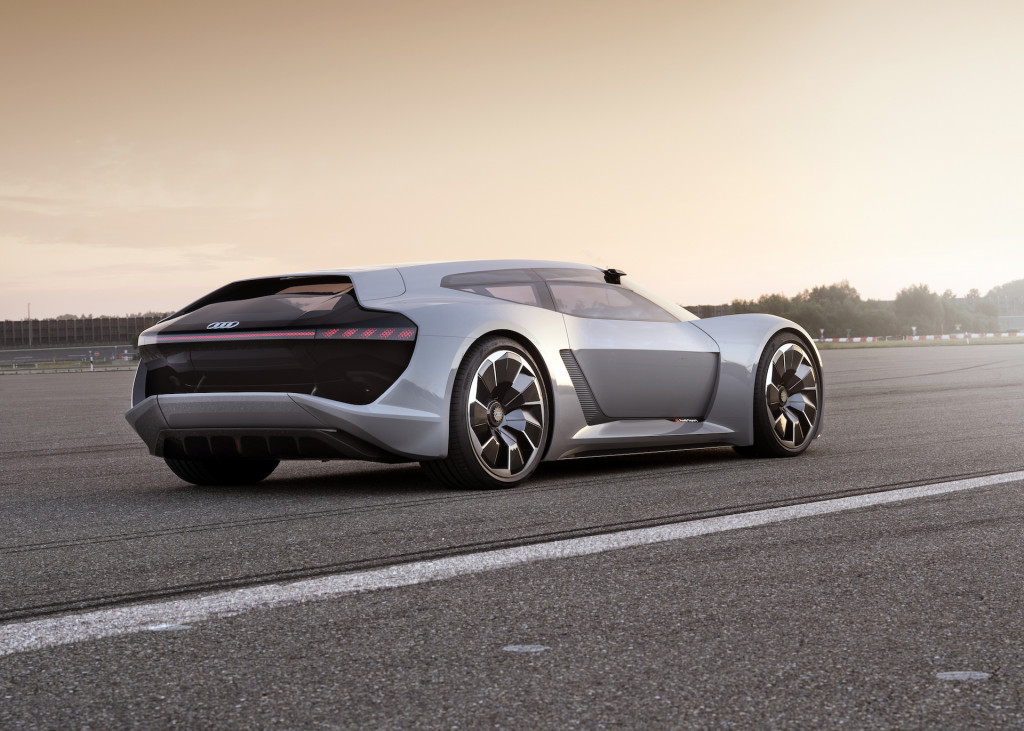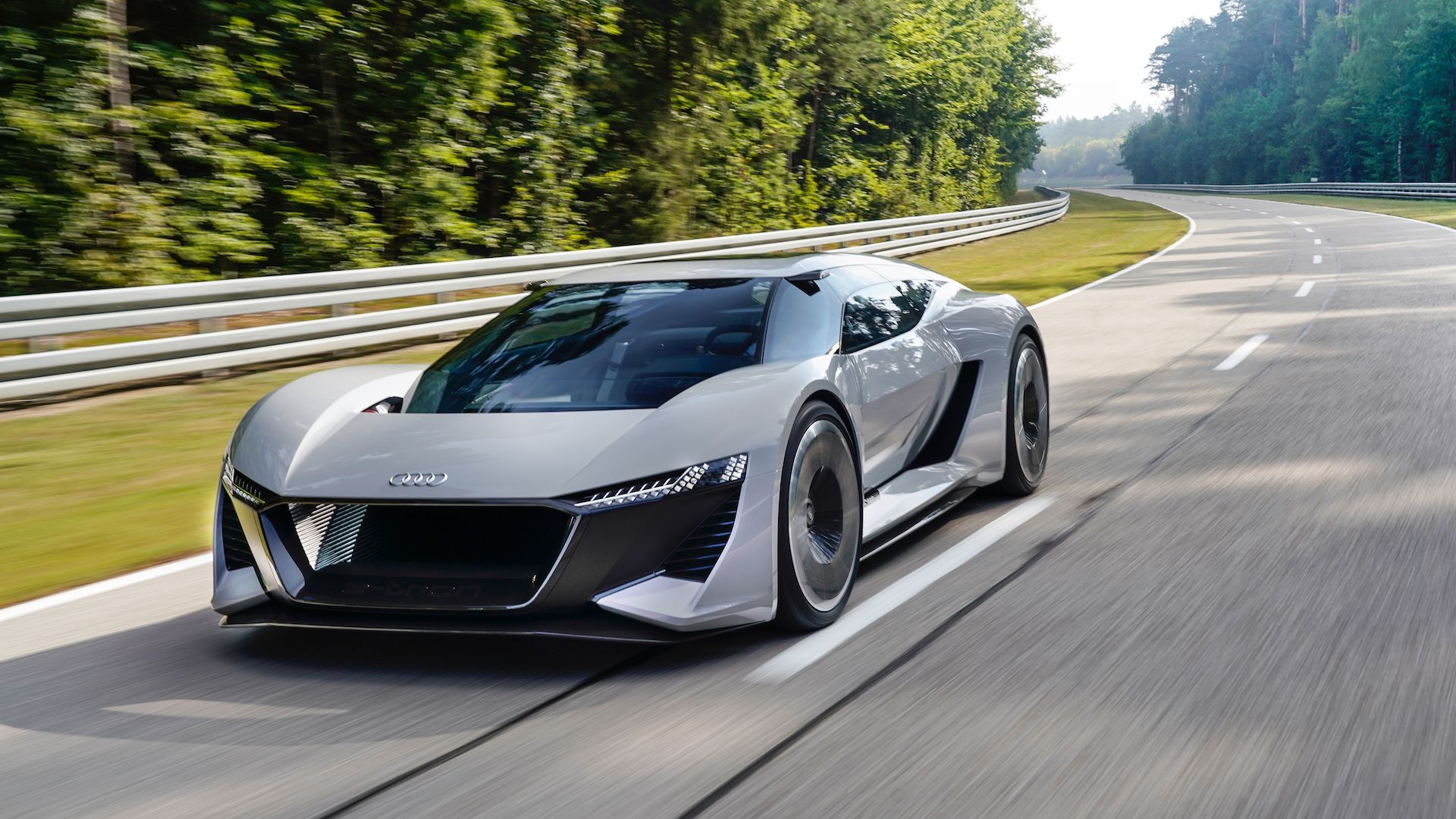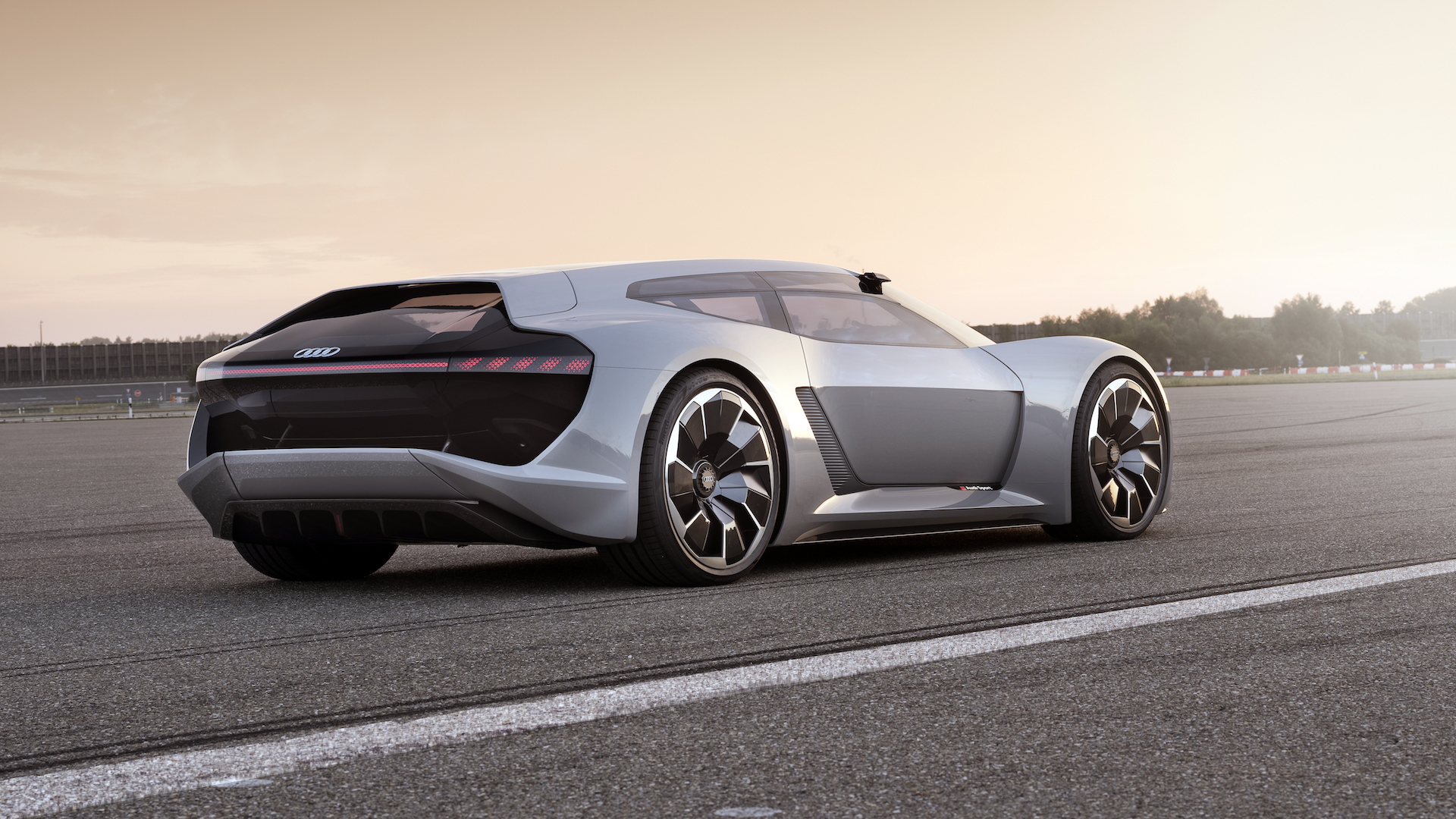Audi dominated the 24 Hours of Le Mans for the better part of a decade with its R18 TDI prototype diesel race car and the German luxury brand is now on the front lines of the race for an electric future. At Monterey Car Week on Thursday, the brand unveiled a concept car that combines the two, the PB18 e-tron.
The PB in the name refers to Pebble Beach where the car is being shown, while the 18 is a nod to the R18 prototype racer. The e-tron name comes from the brand's upcoming range of electric vehicles.
The PB18 e-tron is Audi's idea of a "high-performance sports car of tomorrow." The wide and low body was penned in the company's design studio in Malibu, California, while Audi Sport, the company's performance and racing arm, took care of the technology under the skin.

Audi P18 e-tron concept

Audi P18 e-tron concept

Audi P18 e-tron concept
Perhaps the most unique element of the car is the movable monocoque, which is enabled by by-wire steering and pedals. In a single-occupant layout, it can be slid side to side or centered—ideal for driving on a racetrack. When moved to either side, there is enough room for a pop-up seat with a three-point harness.
A transparent OLED screen is mounted in the driver's line of sight and it can map out the ideal racing line or act as a head-up display.
The cabin is positioned forward like a mid-engine layout. However, instead of an engine, a liquid-cooled 95-kwh solid state battery pack sits in this spot. The center of gravity is located behind the seats and in front of the rear axle.
Audi says the body is made of a mix of carbon fiber, aluminum, and other composites to ensure a light weight of less than 3,417 pounds. The solid state battery also contributes to the light weight, though this technology has yet to be cracked for the automotive market.
The PB18 is 174 inches long, 55.2 inches tall, and its wheelbase is 106.8 inches long. By comparison, the R8 supercar is 174.3 inches long, 48.3 inches tall, and rides on a 104.3-inch wheelbase.

Audi P18 e-tron concept
The extra height comes from the PB18's, well, let's call it wagon or shooting brake design. That gives it 16.6 cubic feet of cargo space, for which Audi has a customized set of luggage.
Audi incorporates some adjustable aerodynamics into the rear of the car. The rear diffuser is mounted high but can be moved down to increase downforce and the rear spoiler can be extended rearward to do the same.
Up front, the car has an open version of the brand's five-pointed grille, thin digital matrix headlights with laser high beams, and pronounced ducts to cool both the 19-inch diameter carbon ceramic brakes and the front motor. The hood dips low and the fenders rise from it to provide a good line of sight for the driver. The PB18 rides on massive 275/35 front and 315/30 rear tires on 22-inch wheels.

Audi P18 e-tron concept
Two additional motors are located in the rear, each directly driving one wheel. The front motor is good for 200 horsepower, and the rear motors can deliver 603 hp. Total system output is 671 hp, though the system can be boosted to 764 hp for spurts. Total torque is 612 pound-feet. Audi says the PB18 e-tron can accelerate from 0-62 mph in just over 2.0 seconds, about the same as the R18 prototype.
That may be too much performance for the street, so Audi lets the driver choose a mode for maximum range instead of max performance. Audi says the range is 311 miles on Europe's new WLTP cycle that should come closer to the American standard than the outgoing NEDC cycle. The car can also take an 800-volt charge, as well as a wireless inductive charge. The 800-volt charge takes just 15 minutes.
Audi used the R18 as the model for the P18's suspension, giving it a push-rod system up front and a pull-rod system out back. Adaptive magnetic ride dampers are found at all four corners.
Will Audi build the PB18 e-tron? Probably not, but the company will certainly aim for some of the technology, and many of the ideas could find their way into future production cars.
For more news from Monterey, see our dedicated hub.






